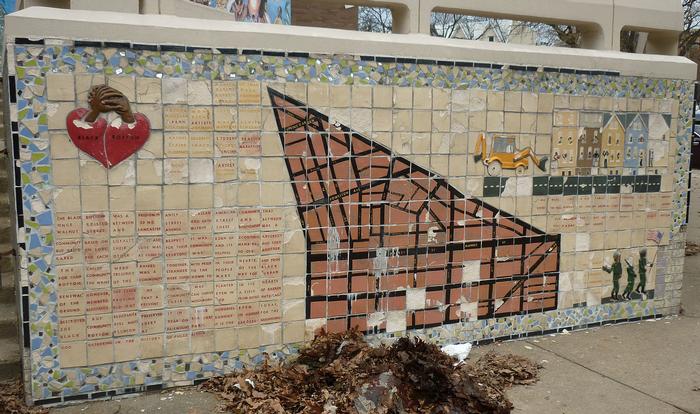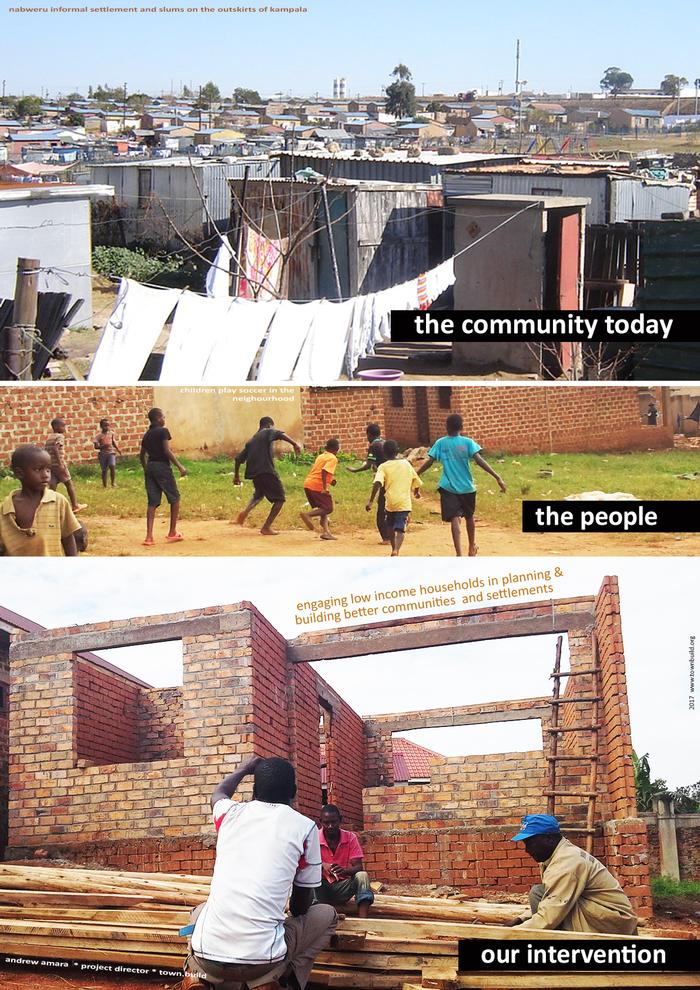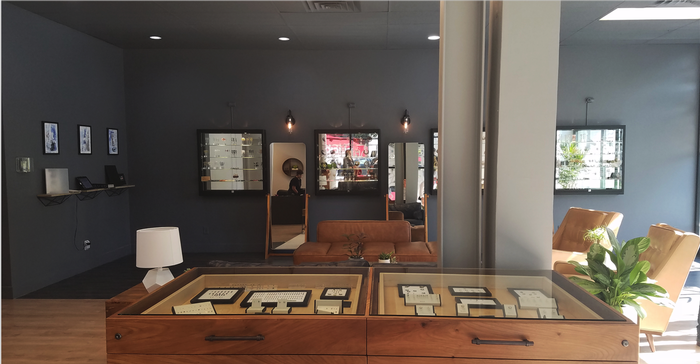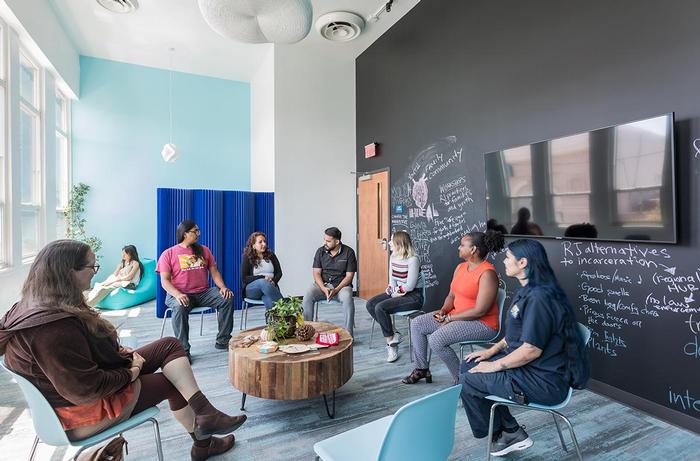Kiera Townsend - EssayThe Urgency of Architectural LiberationWHY IT MATTERS: STATE VIOLENCE
The first day of June was a hot day to be wearing all black, but that’s what hundreds of Black Lives Matter protestors wore as they marched peacefully through downtown Philadelphia, chanting the names of the most recent police brutality victims, George Floyd and Breonna Taylor.
It was around 5:00 PM when I arrived at the end of the Benjamin Franklin Parkway, where crowds of people were gathered. Police were stationed everywhere and they looked alert. Helicopters flew so low overhead, their whirring sounds made it hard to hear. Suddenly, people were frantically running toward the direction I had just arrived from. I saw a huge cloud of tear gas in the distance. Police officers started to push people indiscriminately with their shields, and there was screaming. Through it all, continuous chanting persisted: “Hands up, don’t shoot!”, and “I can’t breathe” – a tribute to victims of police brutality that also seemed to ground the protestors, allowing them to survive the current battle.
On this day, a peaceful protest was escalated by SWAT teams and police officers, who violently dispersed a march down Vine St. Expressway with tear gas, spray pellets, and bean bag projectiles. Protestors had nowhere to go, trapped at first inside of a tunnel and then backed onto a steep hill alongside the expressway. This very Expressway was designed as part of the 1960s urban renewal projects that threatened to destroy the Chinatown community. It was designed through the constant brutality of the settler colonial state – built on stolen lands, using slave labor, and repeatedly recolonized to keep any group from overtaking the white supremacist power structure. It was designed for the Police to easily stalk and bully citizens, which is exactly what happened on this hot summer day.
As I returned to my architecture job every day for the rest of that week, I began to feel a shift inside of me. I felt traumatized from the violations I had witnessed. And I also felt inspired by the tenacity and solidarity I saw among my peers who had been protesting that day. My Instagram feed was filled with friends sharing resources for legal protection and bail funds, spreading educational resources, and helping to provide one another with food, water, and safe transit through the months of protests. They were creating their own mutual aid networks. I began to see how my lifestyle - office job during the daytime, architecture school at night - had kept me busy enough to stay disconnected from local resistance efforts. And the issues that were targeted in these efforts had become so magnified during the pandemic, that I could no longer ignore them. I found myself feeling lost and wondering why I am entering a professional field that feels so disconnected from the struggle for liberation.
Through studying the needs of local resistance efforts against police brutality, community displacement, houselessness, and general state violence, I am going to discuss how architects must begin to de-center ourselves and serve our local communities by lending our skills and power to the movement for liberation that has been led by Black, Indigenous, and immigrant activism for decades. By joining the movement against incarceration and in support of housing and food security, architects can use our visionary abilities to design supportive networks for community survival. Architects must change from being an agent of the state to being an agent of the community.
HISTORY OF MY LOCAL COMMUNITY: UNIVERSITY CITY, WEST PHILADELPHIA, U.S.A.
As an architecture student at Drexel University, I have been a resident of the University City neighborhood in West Philadelphia for 5 years. During this time, I have seen rapid development as Drexel University fulfills its master plan for the highly anticipated “Innovation Neighborhood”, which will develop the university into “the next great tech hub”. The expansion of Drexel and its neighboring universities began in the 1950s, when the universities, with financial support from the Philadelphia City Planning Commission, joined together to form the West Philadelphia Corporation. Their goal aligned with the City’s urban renewal efforts to raze and redevelop the Black Bottom neighborhood, forcibly removing thousands of Black residents and renaming the area “University City”.
Prior to this, the Black Bottom was a close-knit community that acted like a village of “extended family” with traditions of caring for one another intergenerationally. The neighborhood contained successful Black-owned businesses and large families who, as descendants of slavery, had lived in Philadelphia for multiple centuries. After an isolated incident in which a group of Black teenagers beat up and killed a Korean university student in 1958, the West Philadelphia Corporation publicized the incident as a racially motivated killing that demonstrated the depravity of local residents. They created and then leveraged public fear to further their momentum in the destruction of the Black Bottom community. Remaining Black residents in surrounding neighborhoods resisted, but the universities and their partnered corporations had too much power. They also had financial support from local and federal governments. Ever since then, the universities have continued to aggressively redevelop and expand into surrounding neighborhoods, bringing increased police presence, gentrification and an ever-increasing transient population of students that congest access to local resources.
In remaining neighborhoods bordering University City, residents have spent recent decades organizing to defend themselves against university expansion into their neighborhoods. The Mantua Civic Association is composed of citizens who meet regularly and work to stay in control of urban planning decisions concerning their community. Their slogan is “plan or be planned for”. They have gained the power to review zoning and development projects entering their neighborhood, with the goal of protecting their rights and community. Likewise, the New Freedom District is a community preservation proposal that seeks to establish the nearby historic Lancaster Avenue as a Black-owned commercial district, including a proposed anchor institution called the New Africa Center. The effort is led by the Islamic Cultural Preservation and Information Council (ICPIC), an organization that gives tours of historic Black sites in West Philadelphia and advocates to have these places given historic designations by the City. Within just one block of Lancaster Avenue, one can find a corner where Martin Luther King, Jr. gave a speech in 1965 (calling for “freedom now”), and the first temple of the Nation of Islam in Pennsylvania, which was an epicenter of the Black Power movement through the 1950s-60s and included Malcolm X as a teacher. The ultimate strategy of the tours and proposed district is for the community to mark their rightful historic territory in the hopes of preventing future destruction by the University.
WHAT MY LOCAL COMMUNITY NEEDS, WHAT ALL COMMUNITIES NEED
It is clear that local communities need justice, and local universities need to take accountability for their continual violent actions toward their neighbors. In West Philadelphia, the battle is between the University and the Black community. But this situation is not unique - every working-class community in the U.S. is threatened by impending corporate development. This development is encouraged by the government in order to achieve their goal of a white supremacist police state, in which every cultural community is unable to exist without government aid. The only way to win this battle and allow communities to thrive is to use principles of mutual aid to achieve self-determination in every neighborhood. I believe that the West Philadelphia community - and every threatened community - needs architects to advocate for the people and commit to the construction of the built environment as a system of community survival.
Community survival is based on access to resources: safe housing, fresh food, clean air and water, affordable healthcare, and quality education. Past Berkeley Prize winners have studied how to apply architectural solutions to work toward equitable access to these resources. Their projects have used design to create better access to education in remote villages, improved accessibility of cities to those with sensory impairments, construction of mixed-income housing developments, infrastructure for disaster preparedness, and improvements to transit systems. Most of these designers’ reflections on their projects reveal a similar message: although architecture is often analyzed at the scale of the individual building, its power is actually in the process of envisioning solutions to the network of systemic evils in the world. The discipline is “both holistic and actionable...an expression of will” (Nathan Koren, winner of BP in 2000). But the profession is only as powerful as the problems it attempts to solve, which is why we need to begin directing our efforts toward the most critical issues. In order to solve complex global issues such as those studied through the Berkeley Prize, our industry needs to transition from a fear-based, profit-driven approach to a survival-based, community-driven approach.
A community-driven approach to design must be fearless and humble, requiring us to set aside the ego we have gained as a profession. The approach must always be in solidarity with those leading the fight for liberation, with the end goal of allowing communities to gain control over their own resources. Projects that encourage communities to fight for access to resources have historically been called “projects of survival”. The free breakfast program, run by the Black Panther Party, was one of the most notorious of these projects and is often used as a model for mutual aid. These projects often work to redistribute wealth and provide food and housing for people who do not have access to these resources, all within a framework of solidarity amongst a group of people fighting for their rights together. This practice has become more popular during the recent pandemic, including “tent cities” to fight for housing, community fridges to share fresh food, and other forms of sharing resources that serve to not only provide for one another’s needs but also to show that communities can be strong without government help. According to Philly Liberation Radio, networks of community care often consist of 3 parts: (1) the community needs; (2) the providing of these needs from a group of people who can give; and (3) block leaders or community organizers who distribute the resources. The framework creates an opportunity for class solidarity against police and corporate development. Architects would likely fit into the second category of this framework, by helping to create a built environment that provides for the needs of the people who are continuously struggling for justice.
HOW CAN ARCHITECTS BE INSTRUMENTAL FOR COMMUNITY SURVIVAL?
Deanna Van Buren is an architect who, through her firm Designing Justice + Designing Spaces, focuses on designing a network of spaces to amplify restorative justice efforts in communities across the U.S. One of the strategies used in the effort to end mass incarceration is to support the millions of returning citizens who are released from prisons and jails every year. This is one piece of what Deanna calls the “community-based care infrastructure” that architects need to start contributing to in order to liberate our communities from the carceral state. As part of this infrastructure, DJDS designed the first center for restorative justice + economics in the country, for a non-profit called Restore Oakland. The client works toward community reinvestment in the Oakland community, a place that has suffered from the effects of mass incarceration. This project exemplifies the firm’s belief that architects should deeply consider all elements of “finance, policy, program, and place” when designing new buildings. Centers for peacekeeping and justice - along with transitional housing, repurposed prison buildings, and many other building types - are part of a collective of spaces that work in opposition to the prison establishment. This type of work is an example of how architects may pursue the construction of specific building typologies as a strategy of community care.
Architects need to begin seeing our work as a collective of spaces that work toward a common goal. Much of this work may be straightforward, built from the work that community organizers are already doing. Another job of the architect, however, may be to inspire others to imagine different creative strategies to forward this work into the future. In a recent design competition hosted by Michael Ford (“The Hip-Hop Architect), students were asked to use insight from hip-hop lyrics to inspire the design of a “Just City!” that has “dismantled racism”. The first-place winner proposed a copwatch-inspired system of drone outposts in cities that would “deploy drones when a civilian reports a police stop”, which is then recorded and monitored by other citizens in small dedicated stations along the sidewalk. Similar community watch tactics (not involving drones, though) have been used by citizens for decades to keep one another safe against aggressive policing and housing policies in American cities. Design prompts that engage the next generations to learn about these types of defense strategies could be a starting point for redesigning these tactics with updated technology and a more effective approach.
Lastly, architects may use design analysis as evidence to reveal human rights violations on behalf of the State. The tools we use to analyze space and design buildings are used by a London research agency, called “Forensic Architecture,” to investigate “human rights violations including violence committed by states, police forces, militaries, and corporations”. Architectural analysis often reveals truths that other processes cannot, and the resulting evidence can be used in real trials all over the world. By using architecture to reveal the truth about state violence, architects can help to illuminate the evils of imperialist governments and help build on the movement for peoples’ liberation. The emerging field of forensic architecture may provide an opportunity for architects to create a shared global database of spatial analysis that may be useful in community protection strategies. Also, the example of forensic architecture reminds us that architects’ skills may not only be useful for constructing the vision of the future, but also for tearing down the dangerous illusions of the present.
HOW DOES ARCHITECTURAL EDUCATION ENABLE US TO PARTICIPATE IN LIBERATION WORK?
The design process we are trained to follow in school uses the basic elements of line, plane, and volume, to break a problem down into its essential components and then reconstruct those components into a built solution. We learn a solid set of skills that enables us to turn a blank page into a building. This discipline has taught me that we can use these skills to achieve whatever we can imagine. This is, for me, the most valuable takeaway from my architectural education, and I believe we can apply our rigorous design approach to the work of building networks for community survival. I believe we can use our visionary skillset to actually construct the future of liberation.
REFERENCES:
https://www.nytimes.com/video/us/100000007174941/philadelphia-tear-gas-george-floyd-protests.html
https://drexel.edu/president/messages/reports/2014/Innovation-District/
https://theblackbottom.wordpress.com/communities/blackbottom/history/
http://www.newafricacenter.com/new-freedom-district-tour.html
https://www.hiphoparchitecture.com/
https://forensic-architecture.org/
Additional Help and InformationAre you in need of assistance? Please email info@berkeleyprize.org. |




